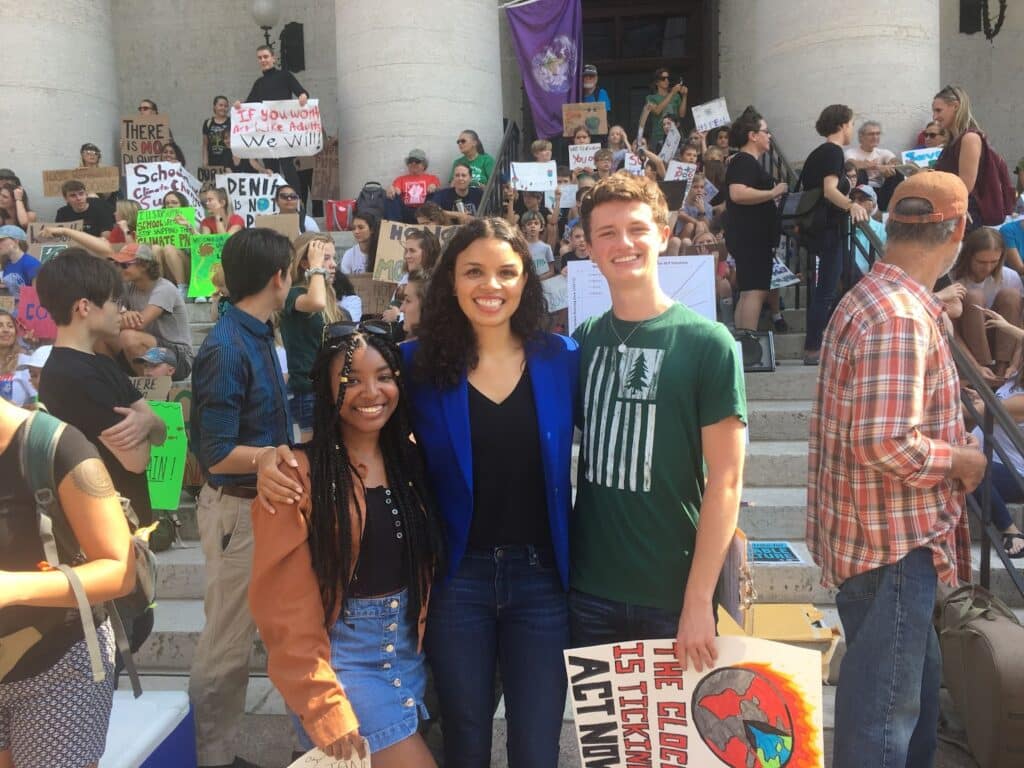
From Instagram to IRL: How Young Environmentalists Can Re-Engage with In-Person Climate Activism
By Kira Jones, Green 2.0 Summer Fellow
Empowered by the Columbus climate strike, Kira Jones, a Green 2.0 Summer Fellow and recent graduate of Ohio State University, has developed a passion for diversifying the environmental legal field. But with the rise of digital activism, she has struggled with engaging with in-person environmental activism. In this blog, Kira shares her story with environmental advocacy as a college student and how she would encourage other young environmentalists to build a climate action community.
I had barely started unpacking my freshman dorm room when I attended my first climate change protest. It was September of 2019 and I was still in the midst of syllabus week when I heard about the Columbus Youth Climate Strike. Inspired by activists like Isra Hirsi, Elsa Mengistu, and Greta Thunberg, I was excited to get involved within the Columbus climate community.
Attending the strike provided me with a newfound sense of community and purpose. I watched in awe as students, teachers, parents, and other community members gathered at the Ohio Statehouse, sharing stories and songs about the urgent need for climate action. I was especially inspired by students, both younger and older than me, who expressed our generation’s shared concerns around climate inaction and its impact on our futures.
I left that afternoon feeling empowered and looking forward to participating in more environmental initiatives within the Columbus community, and throughout my first semester, I did just that. I changed my major to study environmental policy, worked with my college’s student government on sustainability policies and projects, and began doing my own research on environmental issues.
But when COVID-19 hit at the start of my second semester of college, and in-person activities quickly came to a halt, I found it a lot more difficult to engage in climate activism in a way that felt meaningful to me.
While digital forms of engagement, like info-graphics and virtual events, allowed for more accessible ways to share climate research, and the creation of digital communities became beneficial in bridging the experiences of diverse groups of people, I still felt somewhat disconnected from other local environmentalists.

Even as the world began to slowly open back up, I found it challenging to find events and community work that were as empowering as the Youth Climate Strike I attended my freshman year. The comfortability that has been built around digital activism during the pandemic has made it harder for young people to step out of their comfort zone and engage with “IRL” activism.
While it’s clear that Gen-Z cares about climate change, in-person events require a level of personal connection and communication that some of us aren’t used to. It can feel intimidating to step out of the digital comfort zone, but I believe that there are ways we can still go about building climate communities.

Engaging in environmentally friendly activities with families and friends is a great first step. If there’s a protest or meeting that you’re interested in attending, bring someone that you’re comfortable with along with you. You can also integrate your hobbies into your activism. Utilize art, music, food, and other creative outlets to raise awareness for environmental issues that you care about, and don’t be afraid to share your work with others!
Over the past year, I have been able to make small changes in my own life to feel more connected with the environmental movement. I’ve organized events on composting and closing the nature-gap with my sorority, spent time with friends I know are also interested in sustainability to talk about issues important to us, and have engaged in eco-friendly events like thrifting and attending local markets.
It’s important to recognize the responsibility for creating change can’t just be put in the hands of students. Organizational change also needs to occur to create truly inclusive spaces for action. I call on organizations to empower young activists by creating more opportunities for leadership and providing resources to decrease barriers of involvement. Engage in intentional outreach to meet young students where they are and offer assistance through paid internships, sponsored events, and mentorship.
As daunting as the climate movement may seem, with a little bit of creativity and intentionality, we can make space for everyone to get involved. The climate crisis is complex, and no one person can be expected to solve it on their own, but what you can do is take small steps towards making a big difference.

Connect with Kira on LinkedIn to keep in touch with her work.